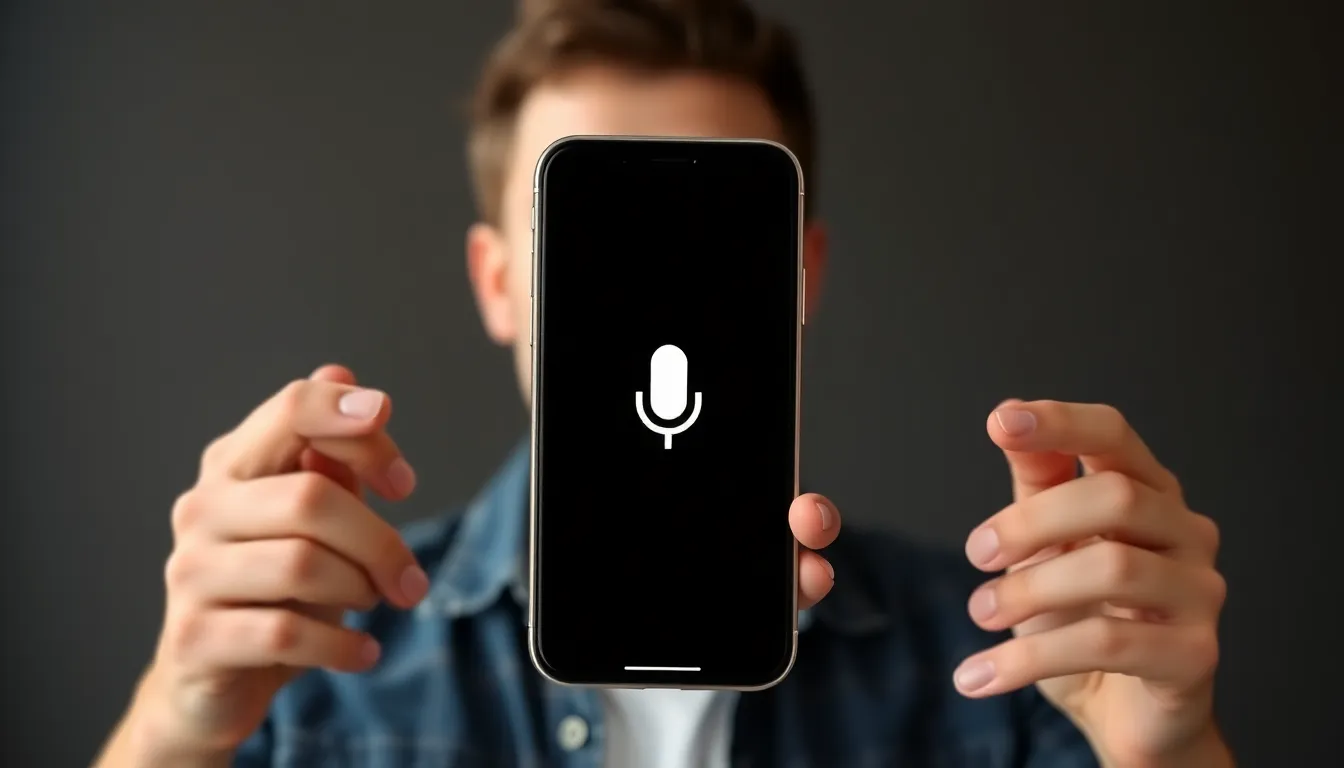Table of Contents
ToggleImagine this: you’re juggling a coffee, your keys, and a million thoughts racing through your mind. The last thing you want to do is type out a lengthy message on your iPhone. Enter voice texting—the superhero of modern communication! With just a few taps, you can transform your spoken words into text faster than you can say “Siri, help me out!”
Understanding Voice Texting on iPhone
Voice texting on iPhone offers a hands-free option to compose messages quickly. Users activate the feature by tapping the microphone icon on the keyboard. This tool converts spoken words into text, providing a seamless communication experience.
Accuracy plays a significant role in the effectiveness of voice texting. The built-in voice recognition technology understands various accents and speech patterns, which enhances user experience. Speaking clearly and at a moderate pace improves transcription results.
In addition to messaging, voice texting integrates with various applications. Users can send voice-to-text inputs via email, notes, and social media platforms. This flexibility makes voice texting an essential feature for everyday communication.
Users often benefit from voice texting in multitasking scenarios. While driving, for instance, individuals can keep their hands on the wheel while responding to messages. The feature promotes safety and efficiency in busy environments.
Voice recognition technology continuously improves, leading to more accurate outputs. Regular updates from Apple enhance functionality by addressing user feedback. Users can expect a more refined experience with each software update.
To ensure optimal use of voice texting, users should familiarize themselves with punctuation commands. For example, saying “comma,” “period,” or “question mark” adds necessary punctuation to messages. Mastering these commands can significantly enhance the clarity of written communication.
Voice texting empowers individuals to communicate conveniently and effectively. As it simplifies the process of sending messages, users find the feature invaluable in their daily routines.
Setting Up Voice Texting

Setting up voice texting on an iPhone enhances communication convenience. Users can quickly dictate messages instead of typing them out.
Enabling Siri and Dictation
To use voice texting, enabling Siri and Dictation functions is essential. Go to Settings, tap on Siri & Search, and turn on “Listen for ‘Hey Siri'” and “Press Side Button for Siri.” These settings allow voice command activation. To enable Dictation, navigate to Settings, select General, then Keyboard, and toggle “Enable Dictation” to on. This feature allows users to convert speech into text by tapping the microphone icon on the keyboard. Activating both Siri and Dictation ensures a seamless voice texting experience.
Configuring Language and Voice Settings
Choosing the right language and voice settings is crucial for optimal performance. Access Settings, scroll to General, and select Language & Region to pick the preferred language. Users can also change dialect settings based on geographic location for improved accuracy. For voice settings, go to Settings, tap on Accessibility, select Spoken Content, and adjust the speaking rate and voice type to suit personal preferences. Customizing these settings enhances the effectiveness of voice recognition, leading to clearer and more accurate text outputs.
How to Do Voice Text on iPhone
Voice texting on iPhone enables users to send messages quickly and efficiently. Discover the various methods to utilize this feature effectively.
Using Siri for Voice Text
Activating Siri allows users to send hands-free messages effortlessly. To begin, hold down the side button or say, “Hey Siri.” Once activated, users can state their message, like “Send a message to John saying I’ll be late.” Siri processes the request and sends the text without needing to type. Users can ensure accurate transcriptions by speaking clearly and pausing for punctuation, which Siri recognizes as commands. Familiarizing oneself with these commands enhances the voice texting experience and makes communication smoother.
Utilizing the Notes App for Voice Text
The Notes app serves as another effective platform for voice texting. Opening the app creates a new note, and then users tap the microphone icon located on the keyboard. Speaking directly into the microphone results in the spoken words transforming into text in real-time. This method proves beneficial for jotting down thoughts or drafting messages. Users can edit and format their text before sharing it via email or messaging apps. By leveraging the Notes app, individuals can maximize their efficiency and maintain clarity in their communications.
Tips for Effective Voice Texting
Effective voice texting relies on clarity and familiarity with commands. Practicing these techniques enhances the overall experience.
Clear Speaking Techniques
Articulate words clearly to improve accuracy in transcription. Speaking at a moderate pace helps the device capture the message correctly. Enunciate each word distinctly and avoid mumbling. Reducing background noise can significantly enhance voice recognition. Utilizing a quiet space provides the best results. If possible, position the device close to your mouth to ensure the microphone receives your voice clearly.
Common Phrases and Commands
Incorporate specific phrases to direct the device effectively. Use simple commands like “send,” “new line,” and “period” to structure messages. Saying “text [contact name]” initiates a text to a specific person. Adding punctuation commands like “comma” or “exclamation point” increases clarity. Familiarizing oneself with frequently used phrases streamlines the messaging process, making it more efficient. Regular practice with these terms leads to improved speed and accuracy in communication.
Troubleshooting Voice Text Issues
Voice texting on iPhone can occasionally encounter issues. Understanding common problems helps users quickly resolve them.
- Microphone Not Working: If the microphone icon appears disabled, check if the device has access to the microphone. Navigate to Settings, select Privacy, then choose Microphone. Ensure the toggle for the app is enabled.
- Poor Recognition Accuracy: Inaccurate transcriptions may occur if background noise is present. Move to a quieter space or reduce noise during voice input. Speaking clearly and articulating words distinctly enhances recognition effectiveness.
- Voice Texting Disabled: Sometimes, users might inadvertently disable voice texting. Check Settings, go to Keyboard, and ensure Enable Dictation is turned on.
- Siri Not Responding: Issues with Siri responding can hinder voice texting. Testing Siri by asking it questions confirms functionality. Verify Siri is enabled under Settings and check the language settings for consistency.
- Software Updates: Running outdated software could impact performance. Go to Settings and select General, then Software Update. Keeping iOS updated ensures access to the latest features and fixes.
- App-Specific Issues: Certain applications might have unique requirements for voice texting. Confirm the app supports dictation, or consult the app’s help section for additional troubleshooting steps.
- Network Connectivity: Poor internet connection can affect some voice features. Testing Wi-Fi or cellular data connectivity ensures that voice commands transmit accurately.
- Restart the Device: Power cycling the iPhone can often resolve temporary glitches. Press and hold the power button until the slider appears, then slide to turn off. Restarting refreshes the system and can rectify persistent issues.
Addressing these common troubleshooting steps allows users to enjoy a seamless voice texting experience on their iPhones.
Voice texting on iPhone transforms communication by offering a fast and efficient way to send messages. This feature not only enhances convenience but also promotes safety during multitasking. As users become familiar with voice commands and tips for clear communication they’ll find their experience improves significantly.
With continuous advancements in voice recognition technology users can expect even greater accuracy and functionality. Embracing voice texting can lead to more streamlined interactions whether for personal use or professional communication. Ultimately it’s a powerful tool that makes connecting with others easier than ever.







